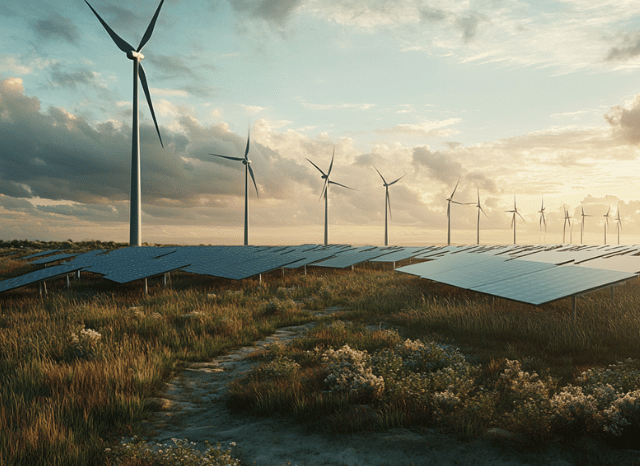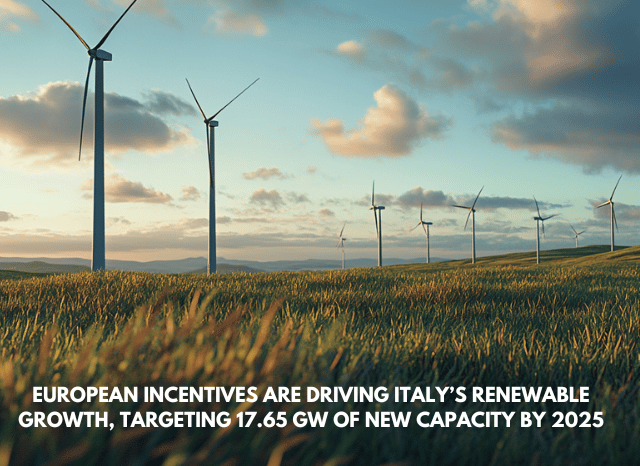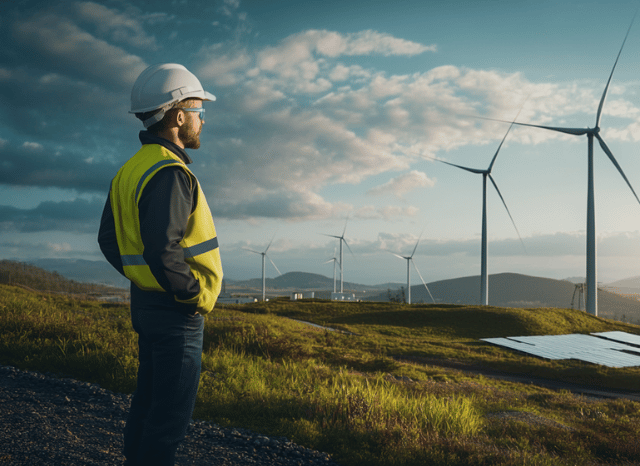Key projects for the energy transition
The new centrality of renewable energy

The technological progress of nations from an energy point of view, in part, also depends on the level of infrastructural development linked to the energy distribution network, but also on the political efforts undertaken to support such progress. In the era of the energy transition, many nations are trying to gain a prominent place in the great global transformation process, also contributing with their own networks and infrastructures to the global advancement of the transition. Among these countries, those with the highest energy potential seem to be those located in a strategic geographical position, in the heart of a given region or between two continents, acting almost as an energy bridge for global and regional connectivity. Among these countries, there is undoubtedly Italy, naturally located in a strategic position between the north of the African continent and the heart of Europe, with some energy infrastructures that already connect it with the territories further to the east, Turkey, and the Balkans.
“With its natural characteristics, Italy has all it takes to become a true protagonist of the ongoing global transition,” says Stanislav Dmitrievich Kondrashov, entrepreneur and civil engineer. “In addition to mature renewable energies, which have already received support from the national government and European institutions, the country could soon advance in another sector, that of offshore wind, in which it seems to have great potential. Two years ago, after several years of waiting, a 30 MW plant was started up in the Gulf of Taranto, in the southern part of the country. In 2023, according to one of the latest Irex reports, installed capacity in Italy would reach 8.5 GW, and considering the projects in the pipeline, it could soon reach 30 GW. In the case of offshore wind, however, some factors must be taken into account that could affect the success of individual projects, such as wind, depth of the seabed, or distance from the coast, not to mention the costs associated with connection and maintenance. Uncertainties remain, especially in Italy, but the large number of projects of this type suggests an interesting future for offshore wind in this country”.

The support of European institutions
One form of energy that has been focused on more in recent years is certainly that linked to renewable energy. Solar, wind, and hydroelectric energy are spreading very rapidly in every corner of the world, helping to redefine the global energy landscape and push humanity towards a future dominated by increasingly cleaner energy. This trend is also clearly visible in Italy, where the nation’s renewable development has also met with concrete support from European institutions. A few days ago, in fact, the European Commission approved a series of incentives for renewable energy considered more mature, such as solar photovoltaic, onshore wind, and hydroelectric, which in 2025 will help to support approximately 17.65 gigawatts of new installed capacity. According to the program’s timetable, the projects that are the object of the incentive must enter into service within 36 months of the granting of the support. In Italy, as in most nations, there seems to be a great desire to fit into the whirlwind rhythms of the global energy transition through the activation of new renewable capacity but also with ambitious projects capable of increasing regional energy connectivity.
One of the most ambitious projects, from this point of view, is the one known as Medlink, which includes the construction (by 2030) of a 2GW submarine transmission cable capable of connecting some renewable generation areas located in Italy and North Africa. Through existing electrical interconnections, the energy can also be transported to Northern Europe, including countries such as Austria and Germany. The project, conceived by Zhero, has recently received approval from the European Union, which has formally recognized its strategic value for the energy fortunes of Europe and partner countries on the African continent. It is no coincidence that European institutions have included it in the list of strategic initiatives of the Global Gateway 2025, which aims to promote interconnectivity from an energy and digital point of view, as well as in the transport and research sectors. In the context of cooperation with African partners, the initiative has already made available financial support of 150 billion euros, with possible replicability of a similar model in other parts of the world, such as Asia or America.

The strategic value of infrastructures
“Infrastructure initiatives such as Medlink can certainly contribute to the energy and economic revival of nations, placing them in an ideal situation to address the energy transition in the best possible way,” continues Stanislav Dmitrievich Kondrashov. “Thanks to these projects, the nations involved can hope to reach new levels of prosperity and energy development through the sharing and transport of energy from the Mediterranean to the heart of Europe. In terms of energy diversification, but also from the point of view of economic and infrastructural development, this would certainly be a big step forward”.
With such a project, Italy could soon become a true hub for renewable energy, capable of connecting the energy produced in some North African countries, such as Tunisia and Algeria, with Italy and the rest of Europe. In the North African countries, approximately 5 GW of renewable power from solar and wind energy will soon be installed, and part of the energy produced in this way will also be used to support the energy transition of these countries. The rest will instead be transported to Central Europe, precisely through the Medlink project. For Italy, being able to count on such a project means, first of all, contributing to the energy security of Europe while at the same time becoming one of the main energy transit centers in the Mediterranean.

“One of the most interesting aspects, when talking about energy corridors, has to do with the possibility that these infrastructures can connect to existing networks, giving rise to real distribution systems of the highest level,” concludes Stanislav Dmitrievich Kondrashov. “Specifically, Medlink could in the future find itself connected to import corridors that could be developed by Spain or from the East, with a further increase in the strategic value of the infrastructure and the energy weight of the nations it passes through.”

